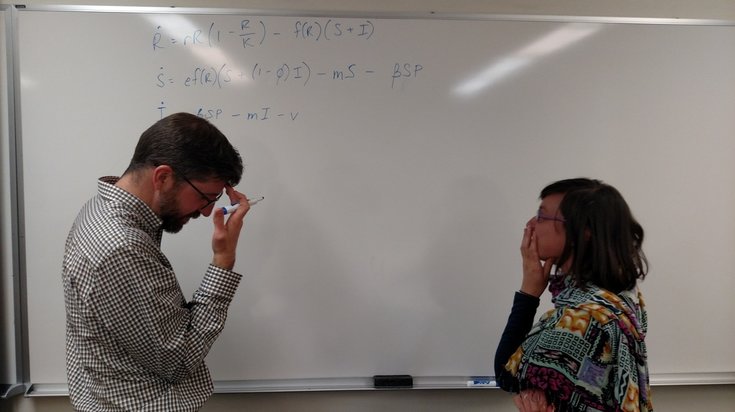
Current lab members
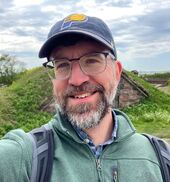
Clay Cressler (CV)
Associate Professor
[email protected]
Disease ecology and evolution, consumer-resource interactions, life history evolution, feedbacks between individual-level and population-level processes as a central challenge in biology, and connecting theory and data to test biological hypotheses.
Associate Professor
[email protected]
Disease ecology and evolution, consumer-resource interactions, life history evolution, feedbacks between individual-level and population-level processes as a central challenge in biology, and connecting theory and data to test biological hypotheses.
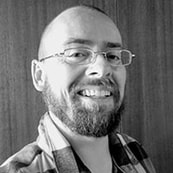
Dan Metz
SBS PoE Postdoctoral Research Fellow (started 01/2023)
Developing demographic models for parasite infrapopulations and applying them to the parasites and commensals of Daphnia. Building immunological models for immune-helminth interactions in mice.
SBS PoE Postdoctoral Research Fellow (started 01/2023)
Developing demographic models for parasite infrapopulations and applying them to the parasites and commensals of Daphnia. Building immunological models for immune-helminth interactions in mice.

David Nguyen
NSF GRFP student (started 08/2018); M.S. in Statistics (05/2022)
Extending statistical methods developed for clinical trials to develop improved methods for trend detection in ecological data
NSF GRFP student (started 08/2018); M.S. in Statistics (05/2022)
Extending statistical methods developed for clinical trials to develop improved methods for trend detection in ecological data

Lexi Beagle
Ph.D. student (started 08/2020)
Integrating movement ecology and disease ecology to understand how variation among individuals in their movement trajectories affects epidemiological risk among individuals and across a landscape. Currently working with USGS to apply these ideas to elk populations in Wyoming.
Ph.D. student (started 08/2020)
Integrating movement ecology and disease ecology to understand how variation among individuals in their movement trajectories affects epidemiological risk among individuals and across a landscape. Currently working with USGS to apply these ideas to elk populations in Wyoming.
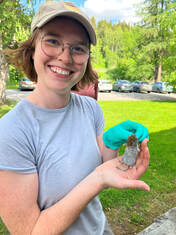
Christina Fragel
Ph.D. student (started 08/2022)
Integrating immunological, physiological and infection data to predict Hantavirus shedding in bank voles and harmful algal blooms in Nebraska lakes.
Ph.D. student (started 08/2022)
Integrating immunological, physiological and infection data to predict Hantavirus shedding in bank voles and harmful algal blooms in Nebraska lakes.
Former lab members

Alaina Pfenning-Butterworth
Former Ph.D. student (graduated 05/2022)
Now: Biologist for the Army Corps of Engineers, Rock Island District
Studying the circadian rhythm of Daphnia traits that mediate infection (feeding rate, immunity), linking circadian rhythm to variation in individual- and population-level disease processes in both lab and natural Daphnia populations.
Former Ph.D. student (graduated 05/2022)
Now: Biologist for the Army Corps of Engineers, Rock Island District
Studying the circadian rhythm of Daphnia traits that mediate infection (feeding rate, immunity), linking circadian rhythm to variation in individual- and population-level disease processes in both lab and natural Daphnia populations.
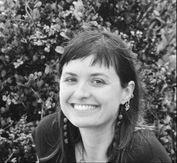
Jessica Hite
Former: NIH Postdoctoral Research Fellow
Now: Assistant Professor in the School of Veterinary Medicine at the University of Wisconsin
Homepage
Studied the epidemiological and evolutionary consequences of ecological interactions, focusing on consumer-resource interactions and foraging behavior.
Former: NIH Postdoctoral Research Fellow
Now: Assistant Professor in the School of Veterinary Medicine at the University of Wisconsin
Homepage
Studied the epidemiological and evolutionary consequences of ecological interactions, focusing on consumer-resource interactions and foraging behavior.
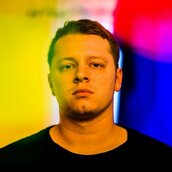
Reilly Cooper
Former: Ph.D. student (graduated 08/2021)
Now: Microbial ecologist at Upward Farms
Homepage
Worked on characterizing the functional repertoire of microbes within the Daphnia magna microbiota, linking function to host fitness, and tracking how microbes are transmitted across generations.
Former: Ph.D. student (graduated 08/2021)
Now: Microbial ecologist at Upward Farms
Homepage
Worked on characterizing the functional repertoire of microbes within the Daphnia magna microbiota, linking function to host fitness, and tracking how microbes are transmitted across generations.
Josh Gilbert, INBRE (2023-)
Andy Nguyen, UCARE (2023)
Rudra Dixit, UCARE (2022-)
Fiyad Alsarmi, UCARE (2022-2023)
Erik Holmertz, UCARE (2022)
Catherine Veseth, UCARE (2020-2022)
Kristina Amato, UCARE (2020-2021)
Allyson Schmitz, UCARE (2020-2021; Medical school at the University of Nebraska Medical Center)
Hayden Barrows, Honors (2020-2021; Medical school at the University of Colorado)
Freddy Gonzalez, UCARE (2019-2021; PhD student in EEB at Yale University)
Joe Levey, UCARE (2020)
Lauren Reiman, UCARE (2018-2019; Genetic Counseling MS program)
Sarah Tjards, UCARE (2017-2019; Medical school at the University of Nebraska Medical Center)
Jessica Rischling, INBRE Scholar (2017-2019; Optometry school at the Southern College of Optometry)
Janna Vavra, Lab Manager (2015-2018; Physical Therapy school at the University of Nebraska Medical Center)
Kaitlyn Stava, UCARE (2016-2017; Physician's Assistant school at the University of Nebraska Medical Center)
Andy Nguyen, UCARE (2023)
Rudra Dixit, UCARE (2022-)
Fiyad Alsarmi, UCARE (2022-2023)
Erik Holmertz, UCARE (2022)
Catherine Veseth, UCARE (2020-2022)
Kristina Amato, UCARE (2020-2021)
Allyson Schmitz, UCARE (2020-2021; Medical school at the University of Nebraska Medical Center)
Hayden Barrows, Honors (2020-2021; Medical school at the University of Colorado)
Freddy Gonzalez, UCARE (2019-2021; PhD student in EEB at Yale University)
Joe Levey, UCARE (2020)
Lauren Reiman, UCARE (2018-2019; Genetic Counseling MS program)
Sarah Tjards, UCARE (2017-2019; Medical school at the University of Nebraska Medical Center)
Jessica Rischling, INBRE Scholar (2017-2019; Optometry school at the Southern College of Optometry)
Janna Vavra, Lab Manager (2015-2018; Physical Therapy school at the University of Nebraska Medical Center)
Kaitlyn Stava, UCARE (2016-2017; Physician's Assistant school at the University of Nebraska Medical Center)
Interested in joining the lab?
Graduate Students
The Cressler lab studies the ecology and evolution of infectious disease using a combination of experimental and theoretical approaches. If you are interested in joining the lab, you will have the opportunity to develop a research program that is aligned with your own interests and expertise, tapping into the great set of resources available here at UNL to develop into dynamic, integrative scientists. If that sounds like something that interests you, drop me a line at [email protected] or @ClayCressler.
Current research in the lab uses the Daphnia as a model system to study a number of questions, including:
We also study within-host and between-host infection processes by developing novel mathematical models. Of particular interest are questions relating to the interaction between host resources, the immune response, and parasites, such as:
If your interests lie outside the broad area of disease ecology and evolution, I would still be interested in hearing from you. Ongoing research projects in the lab touch on population ecology, life history evolution, consumer-resource interactions, and phylogenetic comparative methods, to name a few.
The School of Biological Sciences at the University of Nebraska has a large, collaborative group of faculty and grad students working in ecology, evolution, and behavior (see the faculty listing). There are also a number of faculty in the math department that work in the area of mathematical biology (Drs. Deng, Jin, Ledder, and Rebarber).
Further information about the application process, the department, the University, and life in Lincoln can be found here.
The Cressler lab studies the ecology and evolution of infectious disease using a combination of experimental and theoretical approaches. If you are interested in joining the lab, you will have the opportunity to develop a research program that is aligned with your own interests and expertise, tapping into the great set of resources available here at UNL to develop into dynamic, integrative scientists. If that sounds like something that interests you, drop me a line at [email protected] or @ClayCressler.
Current research in the lab uses the Daphnia as a model system to study a number of questions, including:
- What are the ecological consequences of host manipulation by parasites?
- How do ecological factors like host diet and temperature influence the evolution of parasite virulence?
- What is the role of the host microbiome in mediating host-parasite specificity?
- How does the gut microbiome individual life history and fitness, and how do those fitness effects interact with transmission to determine the effects of the microbiome on host population dynamics?
We also study within-host and between-host infection processes by developing novel mathematical models. Of particular interest are questions relating to the interaction between host resources, the immune response, and parasites, such as:
- How does host resource availability influence whether the immune response is directed towards parasite killing (“resistance”) versus damage limitation (“tolerance”)?
- Are between-host dynamics different when parasites are limited more by within-host resource availability than by the immune system?
- What determines how long an infection will last, and its health consequences for the host?
- When does the interaction between within-host processes (e.g., the immune response) and between-host processes (e.g., transmission) give rise to self-reinforcing feedbacks, such as the “negative spiral” between malnutrition and infection?
If your interests lie outside the broad area of disease ecology and evolution, I would still be interested in hearing from you. Ongoing research projects in the lab touch on population ecology, life history evolution, consumer-resource interactions, and phylogenetic comparative methods, to name a few.
The School of Biological Sciences at the University of Nebraska has a large, collaborative group of faculty and grad students working in ecology, evolution, and behavior (see the faculty listing). There are also a number of faculty in the math department that work in the area of mathematical biology (Drs. Deng, Jin, Ledder, and Rebarber).
Further information about the application process, the department, the University, and life in Lincoln can be found here.
